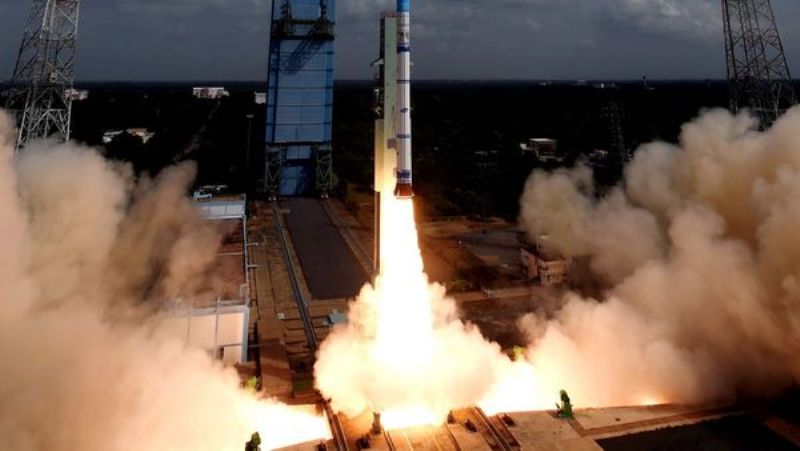The Indian Space Research Organization (ISRO) is all set to launch the heaviest communication satellite CMS-03 on Sunday (November 2).
The satellite, weighing about 4,410 kg, will be the heaviest communication satellite ever to be launched from Indian soil and into a Geosynchronous Transfer Orbit (GTO), India’s space agency said.
The satellite will travel onboard a LVM3-M5 rocket, dubbed as ‘Bahubali’ for its heavy-lift capability.
The launch is scheduled for 5:26 pm from the Satish Dhawan Space Centre in Sriharikota. While ISRO has previously launched heavier satellites, this will be the first such mission from Indian soil.
The 43.5-metre-tall LVM3, or Launch Vehicle Mark-3, has been designed to carry satellites weighing up to 4,000 kg to a Geosynchronous Transfer Orbit (GTO) and 8,000 kg to Low Earth Orbit (LEO).
The rocket has now been fully integrated and shifted to the second launch pad for final pre-launch checks, ISRO said.
The CMS-03 satellite is a multi-band communication satellite that will serve both terrestrial and oceanic regions, enhancing India’s digital and broadcast infrastructure across remote geographies.
Its coverage will extend over the Indian landmass and adjoining ocean regions, supporting communication services, disaster management systems, and strategic communication networks.
This mission, ISRO said, underscores its commitment to building indigenous, high-capacity communication satellites that meet the country’s growing demand for data and connectivity.
Sunday’s mission will mark the fifth operational flight of the LVM3 series, following a string of successful launches, most notably Chandrayaan-3 in July 2023, which made India the first nation to land on the lunar South Pole.
The LVM3-M5 mission further cements ISRO’s confidence in the heavy-lift launcher, which has become the agency’s go-to vehicle for high-capacity missions and future deep-space exploration.
In 2018, ISRO’s heaviest communication satellite, GSAT-11 (5,854 kg), was launched aboard a European Ariane-5 rocket from French Guiana.
ALSO READ: Rare ‘Spotless Baron’ spotted in Sikkim’s Dzongu after five years
The launch of CMS-03, therefore, marks a significant milestone — showcasing India’s new capability to deploy large satellites into geosynchronous orbit using its own launch vehicles, eliminating dependence on foreign launchers.















